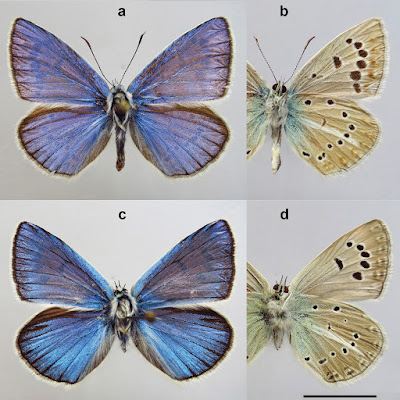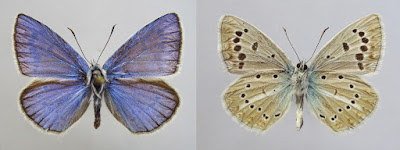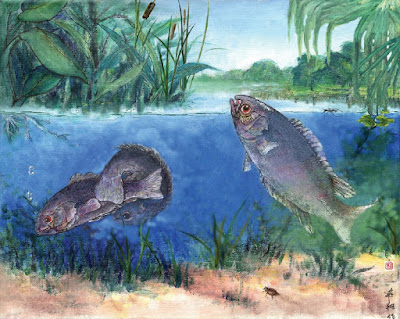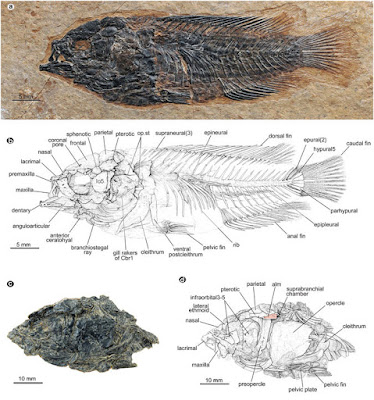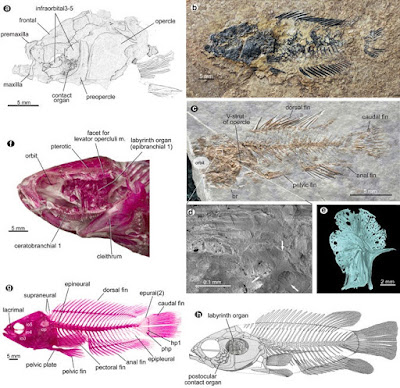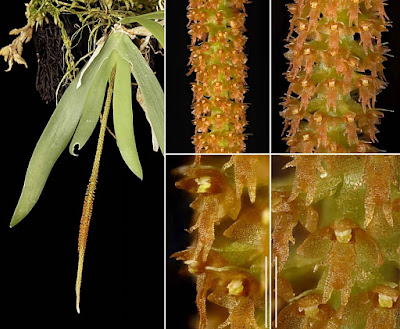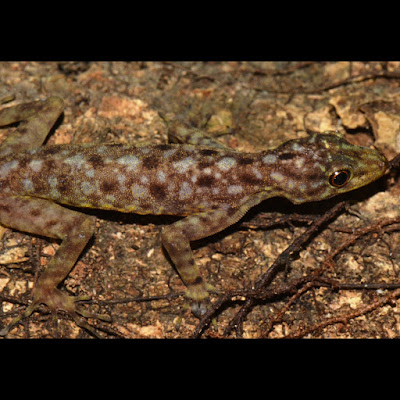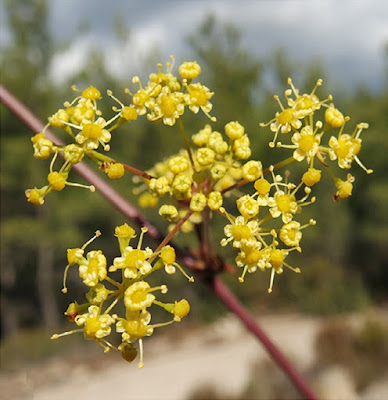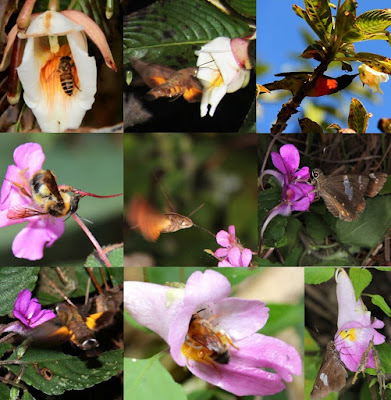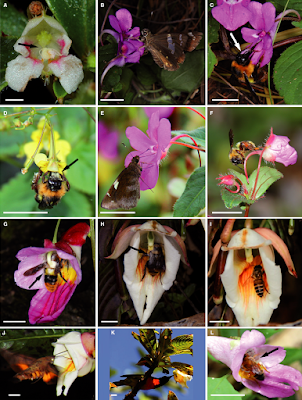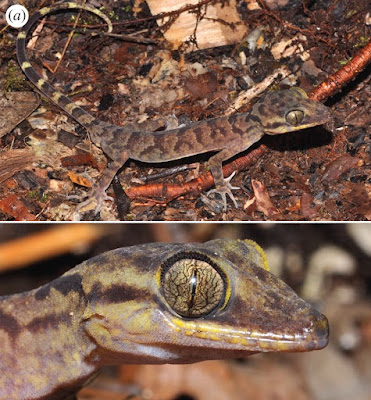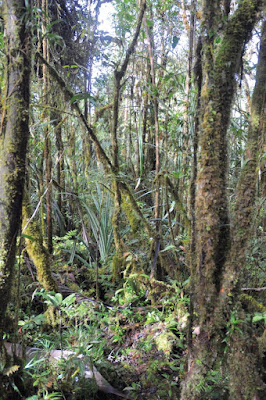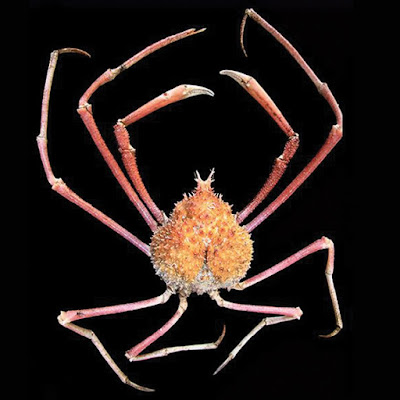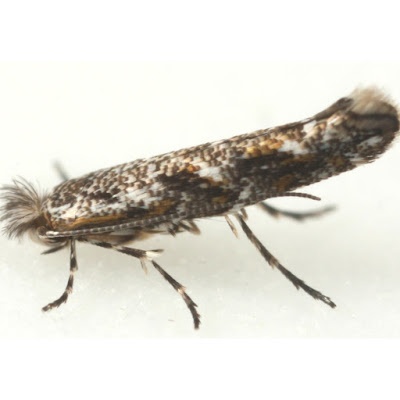[Most Recent Entries] [Calendar View]
Thursday, November 30th, 2017
| Time | Event | ||||||
| 12:54a | [Entomology • 2017] Polommatus (Agrodiaetus) australorossicus • A New Butterfly Species from south Russia revealed through Chromosomal and Molecular Analysis of the Polyommatus (Agrodiaetus) damonides complex (Lepidoptera, Lycaenidae)
Abstract Finding a new species is a rare event in easy-to-see and well-studied organisms like butterflies, especially if they inhabit well-explored areas such as the Western Palaearctic. However, even in this region, gaps in taxonomic knowledge still exist and here we report such a discovery. Using a combined analysis of chromosomal and molecular markers we demonstrate that Polyommatus blue populations from Daghestan (South Russia), previously identified as P. aserbeidschanus, represent in fact a new species which is described here as P. australorossicus sp. n. We also show that the enigmatic Polyommatus damonides described as a form of Polyommatus damone and later considered as an entity similar to P. poseidon or P. ninae is conspecific with a taxon previously known as P. elbursicus. As a result of our study, we propose several taxonomic changes within the P. damonides species complex and suggest the following new combinations: P. damonides elbursicus Forster, 1956, comb. n. and P. damonides gilanensis Eckweiler, 2002, comb. n. Keywords: Ancestral polymorphism, biodiversity, chromosomes, chromosomal fusion/fission, COI, cryptic species, DNA barcoding, incomplete lineage sorting, inverted meiosis, karyosystematics, molecular phylogenetics, mitochondrial introgression, phylogeography, speciation Polommatus (Agrodiaetus) australorossicus sp. n. Diagnosis: Phenotypically P. (A.) australorossicus sp. n. is practically indistinguishable from allopatric closely related P. ninae, P. aserbeidschanus and P. lukhtanovi but the ground colour of the underside of the hindwings is grey in the new species, with ocherous tint, not light or dark brown. The new species differs from sympatric (syntopic and synchronous) P. shamil (Fig. 9c, d) by specific structure of costal area of the forewings in males (Fig. 10). The submarginal row of spots on the forewing underside is more blurred (Fig. 9b), not sharp and clear visible as in P. shamil (Fig. 9d). Additionally, basal black spots are usually present on the underside of the forewings in P. (A.) australorossicus (Fig. 9b); however, this character is not constant. Habitat and biology: Stony steppe and dry meadows from 1500 up to 2000 m a.s.l. Flight period: mid-July to end of August, in a single generation. The new species flights syntopically and synchronously with P. shamil but on average about one decade earlier. Host plant is preliminary determined as Astragalus buschiorum (Fabaceae). Hibernation as first instar larvae. Vladimir A. Lukhtanov and Alexander V. Dantchenko. 2017. A New Butterfly Species from south Russia revealed through Chromosomal and Molecular Analysis of the Polyommatus (Agrodiaetus) damonides complex (Lepidoptera, Lycaenidae). Comparative Cytogenetics. 11(4); 769-795. DOI: 10.3897/CompCytogen.v11i4.20072 New butterfly species discovered in Russia with an unusual set of 46 chromosomes https://www.sciencedaily.com/releases/20 | ||||||
| 1:45a | [PaleoIchthyology • 2017] Eoanabas thibetana • Fossil Climbing Perch and Associated Plant Megafossils indicate A Warm and Wet Central Tibet During the late Oligocene
Abstract Understanding the Tibetan Plateau’s palaeogeography and palaeoenvironment is critical for reconstructing Asia’s climatic history; however, aspects of the plateau’s uplift history remain unclear. Here, we report a fossil biota that sheds new light on these issues. It comprises a fossil climbing perch (Anabantidae) and a diverse subtropical fossil flora from the Chattian (late Oligocene) of central Tibet. The fish, Eoanabas thibetana gen. et sp. nov., is inferred to be closely related to extant climbing perches from tropical lowlands in south Asia and sub-Saharan Africa. It has osteological correlates of a labyrinth organ, which in extant climbing perches gives them the ability to breathe air to survive warm, oxygen-poor stagnant waters or overland excursion under moist condition. This indicates that Eoanabas likewise lived in a warm and humid environment as suggested by the co-existing plant assemblage including palms and golden rain trees among others. As a palaeoaltimeter, this fossil biota suggests an elevation of ca. 1,000 m. These inferences conflict with conclusions of a high and dry Tibet claimed by some recent and influential palaeoaltimetry studies. Our discovery prompts critical re-evaluation of prevailing uplift models of the plateau and their temporal relationships with the Cenozoic climatic changes. Systematic Palaeontology Teleostei Müller, 1845 Anabantiformes sensu Wiley and Johnson, 2010 Anabantoidei sensu Lauder and Liem, 1983 Anabantidae Bonaparte, 1839 Eoanabas thibetana gen. et sp. nov. Etymology. The generic name combines ‘Eo-’ (Greek, early/primeval) with ‘Anabas’, the type genus of Anabantidae from tropical Asia. The specific name refers to Tibet, China. Holotype. IVPP V 22782, a complete skeleton, part and counterpart (Fig. 1a,b). Paratypes. Sixteen specimens are designated as paratypes (Supplementary Information). Locality and Horizon. Jiangnongtangga (type locality) and Songwori in south Nima Basin and Dayu in Lunpola Basin in central Tibet (Supplementary Figs 1 and 2). Middle-upper part of Dingqing Formation, late Oligocene (Chattian) (ca. 26~23.5 Ma)6, 20, 26. Diagnosis. A labyrinth fish displaying anabantid characteristics including a posterior notch of the opercle bounded by spines, a V-shaped strut on inner side of opercle and six to nine anal-fin spines. It shares with Asian anabantids the following derived characters: broad infraorbitals 3–5 completely covering the cheek, a sensory canal pore just behind sphenotic/pterotic junction and pelvic plate lying flat; and it shares with African anabantids some derived characters, e.g., sensory canal opening in between the infraorbitals, supraorbital commissure of the sensory canal absent and male postocular contact organ present. Feixiang Wu, Desui Miao, Mee-mann Chang, Gongle Shi and Ning Wang. 2017. Fossil Climbing Perch and Associated Plant Megafossils indicate A Warm and Wet Central Tibet During the late Oligocene. Scientific Reports. 7, Article number: 878. DOI: 10.1038/s41598-017-00928-9 ResearchGate.net/publication/316090334_F | ||||||
| 1:51a | [Botany • 2017] Oberonia aureolabris • A New Species (Orchidaceae: Malaxideae) from western Java, Indonesia
Abstract Oberonia aureolabris sp. nov. from western Java is described, having been studied using light and scanning electron microscopy. It is distinguished by a panduriform inflated disc, relatively short and widely separated epichile lobes on the lip, more or less equal length of the floral bracts over the entire floriferous portion of the inflorescence and orange colour. Keywords: Orchidaceae, Malaxideae, Oberonia, Monocots Oberonia aureolabris Geiger, sp. nov. This new species is similar to Oberonia rufilabris Lindley (1838: t. 8A), but with an orange flower, lip with panduriform inflated disc, one pair of long lateral lobes in middle of lip, epichile unequally trifid, large outer lobes 25–30% as long as lip and a minute lobe in midline. Etymology:— aureo, Latin for golden/orange; -labris, Latin for lip. Referring to the golden coloured lip and similarity to O. rufilabris. Daniel L. Geiger. 2017. Studies on Oberonia 2 (Orchidaceae: Malaxideae): Oberonia aureolabris, A New Species Discovered in Cultivation. Zootaxa. 329(2); 173–179. DOI: 10.11646/phytotaxa.329.2.8 | ||||||
| 2:29a | [Herpetology • 2017] Cnemaspis purnamai • A New Species of Rock Gecko of the Genus Cnemaspis Strauch, 1887 (Squamata: Gekkonidae) from Belitung Island, Indonesia
Abstract A new species of rock gecko of the genus Cnemaspis Strauch is described from Belitung Island, Indonesia. The new species is differentiated from all other species in the Southern Sunda clade (sensu Grismer et al. 2014a) by having a unique combination of characters including: (1) a maximum SVL of 54.1 mm, (2) five or six postmental scales, (3) enlarged submetacarpal scales on the first finger, (4) enlarged submetatarsal scales on the first toe, (5) keeled ventral scales, (6) absence of precloacal pores, (7) absence of enlarged femoral scales, (8) absence of shield-like subtibial scales, (9) caudal tubercles encircling the tail, (10) an interrupted median row of enlarged keeled subcaudals, (11) presence of a distinct furrow on the lateral surface of the tail (12) 22–24 lamellae beneath fourth toe, and (13) two postcloacal tubercles on each side of the tail base. Keywords: Reptilia, Cnemaspis, Belitung Island, Indonesia, new species Awal Riyanto, Amir Hamidy, Irvan Sidik and Danny Gunalen. 2017. A New Species of Rock Gecko of the Genus Cnemaspis Strauch, 1887 (Squamata: Gekkonidae) from Belitung Island, Indonesia. Zootaxa. 4358(3); 583-597. DOI: 10.11646/zootaxa.4358.3.12 | ||||||
| 10:06a | [Botany • 2017] Peucedanum guvenianum • A New Species (Apiaceae) from West Anatolia, Turkey
Abstract Peucedanum guvenianum Yıldırım & H.Duman is described as a species new to science. It is endemic to the West Anatolia region of Turkey. It is known from a single locality in İzmir Province. P. guvenianum shows similarities to P. longifolium, P. ruthenicum, and P. vourinense. Diagnostic morphological characters are discussed and compared with those of closely related taxa. It is easily distinguished from related species especially by its stem 130-220 cm tall, distinctly striate, densely branched from below the middle to upper part; basal leaves 28-40 cm long and 20-70 cm wide; bracts linear-lanceolate and erect; petals emarginate at apex; mericarp 7.2-14 x 4.3-8 mm, oblong to oblong-orbicular, ±± two times longer from pedicel. Peucedanum guvenianum Yıldırım & H.Duman sp. nov. Diagnosis: P. guvenianum is related to P. ruthenicum, P. longifolium, and P. vourinense. It differs from these species especially by its stem 130–220 cm tall, distinctly striate, densely branched from below the middle to upper part (not maximum to 120 cm tall, slightly striate, slightly or densely branched from above the middle); basal leaves 28–40 cm long and 20–70 cm wide (not 5–30 long and 10–20 wide); bracts linear-lanceolate and erect (not filiform and deflexed); petals emarginate at apex (not without emarginate apex or slightly emarginate at apex); mericarp 7.2–14 × 4.3–8 mm, ±two times longer from pedicel (not 4.5–9 × 3–4 mm, ±equal or slightly shorter). Etymology: The new species was named in honor of Turkish botanist Prof Dr Güven Görk, who is an expert on the flora of Turkey. The Turkish name of this species is given as “Eferezenesi”, according to the guidelines of Menemen et al. (2013).
Distribution and ecology: Peucedanum guvenianum is locally endemic to İzmir Province, West Anatolia. It is an element belonging to the Mediterranean floristic region. The new species grows in the maquis vegetation and opening Pinus brutia area, between 220 and 270 m a.s.l. in the triangle of the Seferihisar, Menderes, and Gümüldür districts in İzmir. Species growing in the near vicinity include Arbutus andrachne L., Arbutus unedo L., Asparagus acutifolius L., Centranthus calcitrapa (L.) Dufr., Cerotonia siliqua L., Cistus creticus L., Dittrichia viscosa (L.) Greuter, Lavandula stoechas L. subsp. stoechas, Lavetera puctata All., Lonicera caprifolium L., Lupinus micranthus Guss., Origanum onites L., Osyris alba L., Phillyrea latifolia L., Pistacia lentiscus L., Satureja thymbra L., and Verbascum rupicola (Hayek et Siehe) Hub.-Mor Hasan Yildirim and Hayri Duman. 2017. Peucedanum guvenianum (Apiaceae), A New Species from West Anatolia, Turkey. Doga, Turkish Journal of Botany. 41(6); 600-608. DOI: 10.3906/bot-1701-56 Turkish scientists discover new plant species endemic to Izmir http://sabahdai.ly/wotaR9 | ||||||
| 10:24a | [Botany • 2016] Floral Specialization for Different Pollinators and Divergent Use of the Same Pollinator Among Co-occurring Impatiens Species (Balsaminaceae) from Southeast Asia
Floral variation among closely related species is thought to often reflect differences in pollination systems. Flowers of the large genus Impatiens are characterized by extensive variation in colour, shape and size and in anther and stigma positioning, but studies of their pollination ecology are scarce and most lack a comparative context. Consequently, the function of floral diversity in Impatiens remains enigmatic. This study documents floral variation and pollination of seven co-occurring Impatiens spp. in the Southeast Asian diversity hotspot. To assess whether floral trait variation reflects specialization for different pollination systems, we tested whether species depend on pollinators for reproduction, identified animals that visit flowers, determined whether these visitors play a role in pollination and quantified and compared key floral traits, including floral dimensions and nectar characteristics. Experimental exclusion of insects decreased fruit and seed set significantly for all species except I. muscicola, which also received almost no visits from animals. Most species received visits from several animals, including bees, birds, butterflies and hawkmoths, only a subset of which were effective pollinators. Impatiens psittacina, I. kerriae, I. racemosa and I. daraneenae were pollinated by bees, primarily Bombus haemorrhoidalis. Impatiens chiangdaoensis and I. santisukii had bimodal pollination systems which combined bee and lepidopteran pollination. Floral traits differed significantly among species with different pollination systems. Autogamous flowers were small and spurless, and did not produce nectar; bee-pollinated flowers had short spurs and large floral chambers with a wide entrance; and bimodally bee- and lepidopteran-pollinated species had long spurs and a small floral chamber with a narrow entrance. Nectar-producing species with different pollination systems did not differ in nectar volume and sugar concentration. Despite the high frequency of bee pollination in co-occurring species, individuals with a morphology suggestive of hybrid origin were rare. Variation in floral architecture, including various forms of corolla asymmetry, facilitates distinct, species-specific pollen-placement on visiting bees. Our results show that floral morphological diversity among Impatiens spp. is associated with both differences in functional pollinator groups and divergent use of the same pollinator. Non-homologous mechanisms of floral asymmetry are consistent with repeated independent evolution, suggesting that competitive interactions among species with the same pollination system have been an important driver of floral variation among Impatiens spp. Keywords: autogamy; bee pollination; butterfly pollination; floral asymmetry; nectar robbing; nectar spur; pollen placement; sympatry; tropics
Saroj Ruchisansakun, Pornpimon Tangtorwongsakul, Ruth J. Cozien, Erik F. Smets FMLS and Timotheüs van der Niet. 2016. Floral Specialization for Different Pollinators and Divergent Use of the Same Pollinator Among Co-occurring Impatiens Species (Balsaminaceae) from Southeast Asia. Botanical Journal of the Linnean Society. 181(4); 651–666. DOI: 10.1111/boj.12427 In a study in the Botanical Journal of the Linnean Society, researchers (including 4 from Naturalis) have presented their results on specialization in pollination techniques in flowers of the genus Impatiens. For two months in 2014, they have studied 7 co-occurring species of the genus Impatiens (see video) in the Chiang Dao Wildlife Sanctuary in Chiang Mai, Thailand. Impatiens develops diff. floral shapes to specialize in pollination techniques + avoid competition! Blog+video https://science.naturalis.nl/en/about-us/n | ||||||
| 12:06p | [Herpetology • 2017] Cyrtodactylus tanim • Morphological and Genetic Evidence for A New Karst Specialist Lizard from New Guinea (Cyrtodactylus: Gekkonidae)
Abstract Exposed limestone karst landscapes, especially in the tropics, are often home to distinctive and specialized biotas. Among vertebrates, a particularly large number of karst-associated lizard taxa have been described, but for the vast majority, evidence of specific adaptions to karst is lacking. A number of studies, however, have provided evidence of consistent morphological trends in lizards that use complex, three-dimensional, saxicoline habitats such as those that typify karst areas. Here we combine morphological and genetic data to test whether a newly discovered gecko from an extremely rugged karst area in New Guinea shows morphological trends matching those observed in other lizards associated with complex rock habitats such as karst and caves. Consistent with predictions, the new species' head is flatter and narrower than similar-sized relatives, and it has proportionally larger eyes and longer limbs. These trends indicate this taxon represents the second documented instance of karst specialization in a New Guinean vertebrate, and suggest morphological traits to test for evidence of specialized ecological associations in the many karst-associated Cyrtodactylus taxa from Southeast Asia. KEYWORDS: Cyrtodactylus, ecological diversity, gecko, morphometric analysis, specialization
Cyrtodactylus tanim n. sp. Diagnosis: Cyrtodactylus tanim n. sp. can be distinguished from all other Melanesian and (Wallacean) Cyrtodactylus by the following unique combination of characters: moderate size (SVL to 96.7 mm) and slender, with a relatively narrow head (HW/SVL 0.17–0.19), mid-dorsal tubercles in 14–16 longitudinal rows at midpoint of body, ventrolateral fold without enlarged tubercles, subcaudal scales not transversely widened, pores in a tripartite series, precloacal pores obvious and of moderate number (15–17), femoral pores minute and numerous (31–30 per limb, 66–76 total), and dorsal colour pattern on torso consisting of six to nine semi-distinctly defined, alternating dark-brown bands or blotches, on a medium-brown background. Distribution and natural history: Currently known from three sites spanning an elevation from approximately 540 to 1075 m.a.s.l. in near-impenetrable limestone country just east of Kaiangabip Village, Western Province, Papua New Guinea. Similar limestone country is widespread, but difficult to access, along the southern edge of the Central Cordillera, and this species is likely to have a wider range than is currently known. A similar, moderately sized Cyrtodactylus with many dark-brown dorsal bands was seen—but not collected—in limestone areas in the north of Gulf Province. If this is also Cyrtodactylus tanim n. sp., then it will have a range spanning over 300 km. Cyrtodactylus tanim n. sp. was collected in hill forest and lower montane forest where it was quite common, especially at higher elevations. Along a ridge of lower montane forest at approximately 1100 m.a.s.l. (figure 8), up to 10 specimens could reliably be seen over several hours of spotlighting on a single night. They were most commonly seen perched at relatively low heights (less than 3 m above substrate) on limestone faces, or on nearby small trees, roots, or lianas. Two eggs are visible in paratypes (NMV75958 and NMV75959) at varying stages of development. Above 1000 m.a.s.l. Cyrtodactylus tanim n. sp. was the only gecko present, but at the two lower elevation sites (less than 900 m.a.s.l.) it occurred sympatrically with C. capreoloides and C. serratus. No habitat segregation with the former was obvious. Cyrtodactylus serratus appeared to be much rarer (six specimens in three weeks) and was observed at greater heights in the forest strata (e.g. on lianas or in larger forest trees more than 3 m above the ground), suggesting this much larger species is more arboreal than Cyrtodactylus tanim n. sp.
Etymology: ‘Tanim’, ‘Tanem’ or ‘Tanemkan’ is the ‘tokples’ name that Faiwol speakers from western Papua New Guinea gave specifically for Cyrtodactylus geckos, both on this survey, and earlier surveys undertaken by Fred Parker around Wangbin and Migalsimbip Villages in 1969 (personal communication). Incidentally, several local people including experienced hunters, showed distaste for Cyrtodactylus geckos, and were reluctant to touch, hold, or in the case of large specimens even look at them. Stuart V. Nielsen and Paul M. Oliver. 2017. Morphological and Genetic Evidence for A New Karst Specialist Lizard from New Guinea (Cyrtodactylus: Gekkonidae). Royal Society Open Science. DOI: 10.1098/rsos.170781 | ||||||
| 12:33p | [Crustacea • 2017] Pleistacantha kannu • A New Large Oregoniid Spider Crab of the Genus Pleistacantha Miers, 1879 (Brachyura, Majoidea), from the Bay of Bengal, India
Abstract A new species of deep-water oregoniid spider crab of the genus Pleistacantha Miers, 1879, is described from the Indian Ocean. The species is distinct in possessing a prominently inflated carapace in which the median parts of the branchial regions almost meet. It can also be distinguished from its closest congeners, P. moseleyi (Miers, 1885), P. pungens (Wood-Mason, in Wood-Mason and Alcock 1891), and P. ori Ahyong & Ng, 2007, in its more elongate and less spinose chelipeds and ambulatory legs, shorter third maxilliped, trapezoidal male pleon and a male first gonopod which is relatively stout with a short subdistal dorsal papilla. Keywords: deep-water, Indian Ocean, new species, Oregoniidae, Pleistacantha, taxonomy
Systematics Family Oregoniidae Garth, 1958 Genus Pleistacantha Miers, 1879 Type species: Pleistacantha sanctijohannis Miers, 1879, by original designation. Pleistacantha kannu sp. n. ?Pleistacantha adenicus Kazmi 1997 (nomen nudum). Diagnosis: Carapace broadly pyriform, postrostral carapace length equal to or slightly longer than carapace width (ratio 1.0–1.1) (Figs 2A, B, 4C, D); dorsal carapace surface with short spines with relatively wider bases (Figs 2A, B, 4C, D, 5C, D); gastric regions strongly swollen (Figs 2A, B, 4C, D, 5C, D); branchial regions strongly swollen laterally and dorsally; medially separated by narrow space, area without spines, spines on margins of regions overlapping (Figs 2A, B, 4C, D, 5C, D); posterior carapace margin convex (Fig. 4C); rostrum relatively short; gently divergent, directly obliquely laterally, not curving upwards (Figs 2A, B, 4C, D, 5C, D, 6E); interantennular spine short, tip bifurcated with shallow concavity between short processes (Figs 6E, F); lateral margins of posterior margin of epistome strongly concave (Fig. 7G, H); ischium of third maxilliped short (Fig. 7I); adult male cheliped elongate, merus and chela slender (Figs 2A, 8F); surface of adult male chela mostly smooth, proximal part with short tubercles or granules, without long spines (Figs 2A, 8E, F); male anterior thoracic sternum relatively broad; surface with numerous blunt and sharp tubercles, never spines (Fig. 9E); male pleon transversely wide; distinctly trapezoidal; surface with numerous blunt and sharp tubercles, never spines (Fig. 9F); G1 relatively stout; distal part gently curved; subdistal dorsal papilla short (Fig. 10K–M). Etymology: Name after the late Professor T. Kannupandi, an influential crustacean worker from the Centre of Advanced Study in Marine Biology in Annamalai University. The name, a shortened version of his family name, is used as a noun in apposition. Peter K. L. Ng, Raveendhiran Ravinesh and S. Ravichandran. 2017. A New Large Oregoniid Spider Crab of the Genus Pleistacantha Miers, 1879, from the Bay of Bengal, India (Crustacea, Brachyura, Majoidea). ZooKeys. 716: 127-146. DOI: 10.3897/zookeys.716.21349 | ||||||
| 1:24p | [Entomology • 2017] Macrosaccus coursetiae • A New Species of Macrosaccus (Lepidoptera: Gracillariidae: Lithocolletinae) from Arizona, USA
Abstract A sixth species of Macrosaccus (Gracillariidae), M. coursetiae sp. nov., is described. The larvae are leafminers of Coursetia glandulosa (Fabaceae). The parasitoid Chrysocharis walleyi (Eulophidae) has been reared from the leaf mines; a table summarizing the host records for this wasp is presented. Keywords: Lepidoptera, Chrysocharis walleyi, Coursetia glandulosa, Eulophidae, Fabaceae, leafminer Charles S. Eiseman and Donald R. Davis. 2017. A New Species of Macrosaccus (Lepidoptera: Gracillariidae: Lithocolletinae) from Arizona, USA. Zootaxa. 4358(2); 385–392. DOI: 10.11646/zootaxa.4358.2.11 |
| << Previous Day |
2017/11/30 [Calendar] |
Next Day >> |
